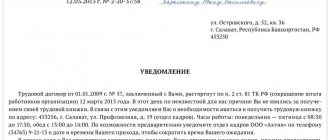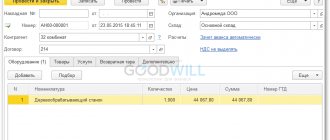Tax entry deadline
One of the reasons for introducing the new tax is the redistribution of responsibilities for collecting funds from organizations that have a negative impact on the environment.
Until 2020, the responsibility for collection fell on the relevant agency – Rosprirodnadzor. The government agency, which did not have payments as its main task, achieved less than half of the required volume of compensation for damage caused to the environment.
The transfer of responsibilities to the Federal Tax Service, which has the necessary experience in collecting debts and organizing the payment of mandatory payments, should lead to an increase in budget revenues. In theory, this will provide new resources to protect the environment. All funds collected will go into the general budget, from which money will then be allocated for environmental protection.
In addition to changes in the recipient of payments, the type of payment itself has changed: the environmental fee has become a tax. The new legislative provisions largely duplicate the content of the current federal law of January 10, 2002 No. 7-FZ (Article 16). According to the drafters, the environmental tax should maintain the status quo for organizations making payments. The changes will only affect unscrupulous enterprises that are required to make payments but do not do so. From 2020 they will be responsible to the tax authorities.
From January 1 to March 1, 2020, there will be a transition period during which Rosprirodnadzor will transmit data on organizations that have a negative impact on the environment to the Federal Tax Service. Over the next 10 years (until December 31, 2029), a reduced penalty interest rate of 10% will apply for defaulters. Changes to the Tax Code are expected to come into force on January 1, 2020.
How to calculate and pay environmental tax?
The period for paying environmental tax is 1 year.
The period for paying environmental tax is 1 year. Its size is calculated for each object by multiplying the tax base, the stipulated rate and the corresponding coefficients. The results obtained for each object are summarized.
The legislator obliges to make advance payments for the environmental tax during the year. Subjects using special regimes are exempt from this obligation. Advance payments are made quarterly in the amount of 25% of the tax paid for the previous period. At the end of the period, the difference in fiscal tax between the periods (current and previous) is paid additionally.
The amount of tax can be reduced by the amount of costs incurred in connection with activities aimed at reducing the harmful impact on the environment. These expenses must be documented.
Taxpayers of environmental tax
The main principle by which taxpayers will be determined is harm to the environment. First of all, individual entrepreneurs and organizations are subject to taxation. Another condition is that the category of the facility where the activity is carried out is taken into account. The tax applies only to the first three categories.
| Conditions | Taxpayers |
| Negative impact on the environment | Organizations, individual entrepreneurs |
| Generation of waste, except MSW | Organizations, individual entrepreneurs |
| Working with MSW | Regional operators |
| Activities at stationary facilities of categories 1-3 | Organizations, individual entrepreneurs |
| Production or import of goods and packaging that are disposed of after use | Organizations, individual entrepreneurs |
| Manufacture or import of wheeled vehicles or chassis | Organizations, individual entrepreneurs |
| Purchasing vehicles from persons who have not paid the recycling fee | Organizations, individual entrepreneurs |
For example, transportation companies using trucks are not taxed because the vehicle is not a stationary source of emissions.
Each taxable person is required to register with the local tax office within 30 days of registration with the state. Within 10 days, Rosprirodnadzor transmits to the Federal Tax Service information on new facilities that negatively affect the environment. The accounting breakdown is as follows:
- Rosprirodnadzor takes into account objects;
- Federal Tax Service - taxpayers.
For activities falling into category 4, it is necessary to obtain appropriate confirmation. The total number of objects in Russia that have a negative impact on the environment is more than 250 thousand.
Environmental tax - change of name or content?
The question posed in the title of the article was the topic of a round table that was held on October 31, 2020 as part of the All-Russian Tax Forum at the Chamber of Commerce and Industry of the Russian Federation. The meeting was attended by representatives of the Russian Ministry of Finance, the Russian Ministry of Natural Resources, the Russian Ministry of Economic Development, the Constitutional Court, the RF Chamber of Commerce and Industry Committee on Natural Resources and Ecology, as well as representatives of the business community.
The reason for the round table was the draft federal law developed by the Russian Ministry of Finance, introducing a new chapter “Environmental Tax” into the Tax Code of the Russian Federation. It is posted on a single portal of legal information and is currently at the stage of public discussions on the text of the bill and its anti-corruption examination. In the clarification dated 08/14/2018 “On the bill on environmental tax”, the financial department explained that no new environmental payments are being introduced. An environmental tax should replace the current fee for negative impact on the environment. For more information about this, see “EZh-Accountant”, 2020, No. 33.
The round table participants were asked to consider the possibility of approving the RF Chamber of Commerce and Industry of transforming the payment for environmental pollution into an environmental tax if a number of fundamental conditions are met, namely:
- real provision of targeted use of accumulated funds through the creation of special environmental budget funds at various levels;
- removing barriers to the implementation of the legal right of natural resource users to take into account the costs of environmental protection measures;
- correct distribution of functions and tasks between the Federal Tax Service of Russia and Rosprirodnadzor;
- transition period in administration - at least 10 years;
- inadmissibility of increasing the total administrative burden of natural resource users;
- recognition of all natural resource users as environmental tax payers, regardless of sources of financing;
- eliminating the possibility of simultaneously demanding compensation for environmental damage, regardless of the fact of payment of environmental tax;
- eliminating the collection of an environmental tax for the generation of waste, since the negative impact on the environment arises as a result of the disposal of waste, and not its generation;
- allocation of environmental budgetary allocations not only for public procurement of specific works or equipment, but also for public-private partnerships;
- establishing rules for selecting environmental projects implemented at the expense of budgets or with the use of state support.
Participants in the round table expressed their views on the bill.
Ministry of Finance of Russia
A representative of the department noted that the purpose of introducing an environmental tax is to make the system of collecting environmental fees more transparent and understandable, including in terms of administration. And tax authorities administer payments very well.
When developing the bill, the goal was not to increase the tax burden on enterprises or tighten it. It should remain the same and not lead to a deterioration in the situation of enterprises. And all controversial issues that arise can be “adjusted” within the framework of the Tax Code.
Ministry of Natural Resources and Environment of Russia
According to the agency, which is now the only administrator of the environmental payment, the bill is still very “raw”. In general, the Russian Ministry of Natural Resources supports the policy of predictability and transparency of environmental payments. But the project needs to be finalized in order to avoid increasing the burden on companies and so that the payment does not turn from a stimulus payment into a fiscal one.
The collection of environmental taxes should not be aimed at replenishing the budget, but at reducing the negative impact on the environment. Therefore, the ultimate goal should be zero tax collection. This will mean that all standards are met by enterprises and there is no negative impact on the environment.
constitutional Court
The positive aspect of introducing an environmental tax is that it will eliminate the current confusion in environmental payments. In the future, there should be a single comprehensive payment that includes all public payments related to environmental impact. Otherwise, the business community will be completely confused about who pays for what. At the same time, it is important that it does not happen that most of the tax will be spent on its administration.
The bill retains the opportunity to reduce the amount of environmental tax on expenses associated with the implementation of measures to reduce the negative impact on the environment. However, according to the representative of the Constitutional Court, it is important not to allow these deductions to completely “eat up” the obligation to pay tax. The budget must still receive funds. After all, environmental protection measures do not restore the environment with lightning speed. In this regard, the Constitutional Court upholds the 70% deduction limit contained in the bill.
According to the representative of the judicial authority, it is impossible to exempt from payment of environmental tax based on the type of financing. There must be equality among public payment payers. In addition, it cannot be said that payment of tax can replace compensation for harm, which is a measure of civil liability. And tax has nothing to do with liability. The state should not refuse compensation for harm in the interests of citizens living in the territory to which the harm was caused.
Another point that the representative of the Constitutional Court drew attention to concerns transitional provisions. The bill focuses on the recovery of arrears of environmental payments during the transition period, but says nothing about the return of overpayments. And with this, as the practice of transferring the administration of insurance premiums to the tax authorities has shown, there can be problems.
Ministry of Economic Development of Russia
The agency supports the position: “Everything that is a tax should be in the Tax Code.” But the environmental tax is very complex. It is difficult to establish a tax base and an adequate tax rate so as not to increase the tax burden. Therefore, the Russian Ministry of Economic Development believes that it is impossible to start converting payments into taxes with such a complex payment.
In addition, the criminal liability that threatens tax evaders is frightening. There are fears that all major payers will sue the tax authorities.
Committee of the Russian Chamber of Commerce and Industry on environmental management and ecology
Committee representatives noted that the tax base should be clearly defined. And the way it is defined in the bill (the volume or mass of emissions of pollutants into the air, discharges of pollutants into water bodies, the volume or mass of actually generated and disposed production and consumption waste) does not meet this criterion. Such a tax base requires good instrumental control, which does not exist yet.
A positive aspect of the introduction of the tax will be that there will be stricter liability. Now it actually doesn't exist. Currently, in order not to pay environmental fees, you can get a certificate that you recycle waste yourself. These certificates are usually purchased.
You need to clearly understand where the collected money goes. There is little control over this now. According to current legislation, environmental payments go: 5% to the federal budget, 40% to the constituent entities of the Russian Federation and 55% to local budgets. In this case, the funds collected are spent at the discretion of the constituent entities of the Russian Federation and local authorities. That is, the money can be used, for example, for salaries of doctors and teachers, and not for environmental activities.
A flaw (or mistake) of the bill is the inclusion of individuals among environmental tax payers. It turns out that every janitor and every summer resident will have to obtain a license to handle waste.
Representatives of the business community
Speakers at the round table noted the importance of the targeted use of the environmental tax. It is necessary that companies know and see that the money paid goes to restore the environment on their territory. It is also important to control that the constituent entities of the Russian Federation and local authorities allocate no less funds to the environment than they received as payments.
Representatives of the business community agreed that there are problems with determining the tax base, since this is influenced by a huge number of factors.
Some speakers said that the state views the environmental tax as a budget replenishment. This is evidenced, in particular, by the system of advance payments. After all, regardless of what negative impact the company has had on the environment this year, you need to pay a quarter of what they paid last year. And last year could have been unsuccessful in terms of the environment. In addition, according to statements by the developers of the bill, the environmental tax is aimed at implementing environmental protection measures. However, there is no specific program for such events. Therefore, it turns out that the main task of introducing an environmental tax is to raise money.
The bill provides for the return of up to 70% of payments. But companies can have very effective environmental mitigation costs that eliminate the negative impact entirely. But the companies will not be able to return the money paid in full. In this regard, there is a disincentive for enterprises to implement highly effective measures to reduce the negative impact on the environment.
Objects of taxation
Activities that are negative for the environment are identified as objects of taxation.
are not subject to environmental tax :
- activities financed from the budget of any level;
- objects that do not have a negative effect on the environment;
- packaging and reusable products;
- export goods produced on the territory of the Russian Federation;
- use of rocks and ferrous metal production waste (hazard class 4-5) to fill cavities during reclamation;
- accumulation of raw materials for subsequent disposal or disinfection within 11 months after appearance;
- Category 4 emissions at the facility;
- old vehicles (more than 30 years old) while maintaining their original condition.
Other production activities of the enterprise are taxed if they have a negative impact:
- atmospheric emissions from stationary sources;
- discharge to wastewater;
- processing of waste of any hazard class.
In addition to activities, objects act as objects:
- waste goods and packaging;
- transport packaging (used for packaging several units);
- vehicles according to the list.
The tax base
When calculating the tax value, several indicators related to volume and mass are used as a base:
- atmospheric emissions;
- dumping into water;
- disposed waste.
Additional characteristics can raise or lower the final indicator:
- waste recycling (reduces);
- exceeding the standards established by Rosprirodnadzor (increases).
All types of waste processed and generated at the enterprise are taken into account. Data is collected from each stationary source based on the results of environmental monitoring at the enterprise. All values used are based on the contractual relations of the organization itself, which enters into agreements for the removal and disposal of waste.
How will the tax base for the environmental tax be determined?
It is in the mechanisms that the main differences between the new tax and the old fee for negative environmental impact lie.
The tax base is determined by the taxpayer on the basis of industrial environmental control data for each facility for each stationary source in relation to each pollutant, according to a strictly defined hazard class of this substance.
When determining the tax base, the following are taken into account:
- volume or mass of emissions of pollutants, discharges of pollutants within the limits of permissible emission standards, permissible discharge standards;
- volume or mass of emissions of pollutants, discharges of pollutants within the limits on emissions and discharges of pollutants and microorganisms (hereinafter referred to as the limits on emissions and discharges);
- the volume or mass of emissions of pollutants, discharges of pollutants that exceed the standards specified in subparagraph “a” of this paragraph, the limits (including emergency emissions and discharges) specified in subparagraph “b” of this paragraph;
- limits on the disposal of production and consumption waste and their exceeding.
Tax rate
The tax rate is different for each type of waste or raw material.
For loose goods, the calculation is based on each ton; for piece goods, per unit. In addition, the specifics of the product determine the use of coefficients.
Specific characteristics include some vehicle data, for example:
- year of issue;
- engine power;
- number of axes.
For each product or package, the tax rate will be similar to the current environmental fee. The size consists of 4 characteristics:
- the mass of goods sold in Russia during the year;
- coefficient;
- mass of reused goods;
- bid.
Rate value for some products:
| Product or waste | Bet size, rub. |
| Self-propelled vehicles and trailers | 172 500 |
| Other modes of transport | 150 000 |
| Lead acid batteries | 27 320 |
| Wheeled vehicles (category M1, G) | 20 000 |
| Chlorine | 181,6 |
| Nitrogen dioxide, sodium carbonate, ammonia | 138,8 |
Rules for calculating charges
Each taxpayer calculates the amount of environmental tax independently, taking into account each source of negative impact on the environment, hazard classes, and activities of hazard categories 1-3. A year after the law comes into force, a coefficient reflecting changes in consumer prices will begin to be applied.
To motivate to reduce emissions and waste generation, appropriate increasing factors will be applied:
| Meaning | Condition of use |
| 100 | Exceeding the established weight, lack of results from the emission reduction program |
| 25 | Within the limits of the temporarily permitted excess |
To calculate the tax, a formula similar to calculating the size of the environmental fee is used:
C = K * M * N, where
C – amount of tax or fee,
K – coefficient,
M – mass for disposal minus processed raw materials,
N – normal.
Is it possible to reduce the amount of environmental tax and receive a benefit, what documents are needed for this?
A reduction in the amount of the environmental fee is possible for payers by an amount equal to the costs associated with the implementation of measures to reduce the level of negative impact on the environment. Limits will be determined within which the amount of collection will be charged for each substance that pollutes nature and the atmosphere.
The payer will have to provide documentary evidence that he carried out measures related to reducing the level of negative impact, and provided for by environmental protection authorities.
Documents that will be needed to reduce the amount of environmental tax:
|
Important:
The amount of such a tax deduction cannot be more than 70% of the accrued tax amount.
The amount of expenses by which the environmental fee can be reduced can be taken into account in the next tax period. That is, the amount can be divided into several parts, which the payer will pay in different tax periods.
Reducing the payment amount
Coefficients are used as a punishment for exceeding standards, as well as as an incentive for enterprises using innovative waste treatment methods.
The key condition for using a reduction factor is that innovations must reduce the negative impact or reduce the volume of destroyed waste. For example, if waste of hazard class 3 after processing became less hazardous class 4, then such work is encouraged by a reduction in the payment amount.
Several values are used to reduce the payment as much as possible up to 70%:
| Meaning | Condition of use |
| 0,3 | When working on your own territory and not exceeding limits |
| 0,33 | Disposal of class 4 waste generated during the processing of class 2 waste |
| 0,49 | Disposal of class 4 waste generated during the processing of class 3 waste |
| 0,5 | Disposal of class 4-5 waste generated during processing of waste from the processing and mining industries |
| 0,67 | Disposal of class 3 waste generated during the processing of class 2 waste |
When introducing the best technologies paid for by the enterprise in the field of environmental protection, a zero coefficient can be applied, which resets the entire tax amount. Situations in which an enterprise may not legally pay environmental tax:
- achieving standards after the introduction of technologies at a facility that has a negative impact on the environment;
- the accumulated waste is reused for our own needs or transferred to another organization for this purpose.
Procedure and deadline for tax payment
Data for 1 calendar year are used as the taxation period.
All calculations must be made before March 25 of the following reporting year. A scheme of advance payments is used, which are accepted after the reporting period: 1-3 quarters of the year. New taxpayers begin making payments on January 1 of the following year after registering with the Federal Tax Service.
An advance scheme is used to pay the environmental tax, except for small and medium-sized businesses. In total, the payment consists of 4 parts:
- 3 advance payments equal to a quarter of the amount for last year - for the first 3 quarters;
- payment of the balance.
The final payment deadline is no later than March 25 of the year following the reporting year. Quarterly payments are paid no later than the 20th day of the first month of the next quarter.
How to pay the environmental fee
Environmental fee is a concept introduced by Art. 24.5 of the Law “On Production and Consumption Waste” dated June 24, 1998 No. 89-FZ. The obligation to pay such an environmental tax is assigned to the following persons when disposing of products that have lost their consumer properties:
- manufacturers;
- importers.
In this case, the specified payment starting from 2020 (i.e. from the payment for 2020) is made once until April 15 of the year following the reporting year (subparagraph “a”, paragraph 2 of the Decree of the Government of the Russian Federation dated October 8, 2015 No. 1073).
Control over the payment of the fee is entrusted to Rosprirodnadzor, and the amounts go to the federal budget of the Russian Federation.
How to determine the value of the environmental tax rate is discussed in the article “The procedure for calculating and paying environmental tax .
The calculation of this type of environmental tax is made taking into account deviations of the actual value from the standards established by the Government of the Russian Federation.
Reporting on the environmental fee, like the payment, is annual and is submitted to Rosprirodnadzor within the time limit established for payment of the fee (subparagraph “b”, paragraph 2 of the Decree of the Government of the Russian Federation dated October 8, 2015 No. 1073).
The form to be used to complete the 2020 report can be seen here .
For an example of filling out an environmental fee declaration, see this publication.
Submitted reporting
Filling out a tax return occurs only electronically. The taxpayer provides and takes into account the following data:
- volume and class of waste for each source;
- bet and odds.
The first indicator is determined through environmental control, as well as on the basis of acts of acceptance and transfer of waste for disposal to third parties. All provided data related to waste management must be confirmed by the regulatory authority - Rosprirodnadzor. When filling out the electronic form, indicate the place of filing the declaration - the local branch of the Federal Tax Service.
Procedure for filling out the declaration
The form is not completed for exported goods and packages. Goods and packaging produced in Russia, EAEU countries, and third countries are included in the declaration (after completing customs procedures).
The declaration of manufacturers is filled out on the basis of accounting documents, importers - customs and transport. Each name and each unit of goods is taken into account, as well as weight with a discrepancy from the actual one of no more than a kilogram.









